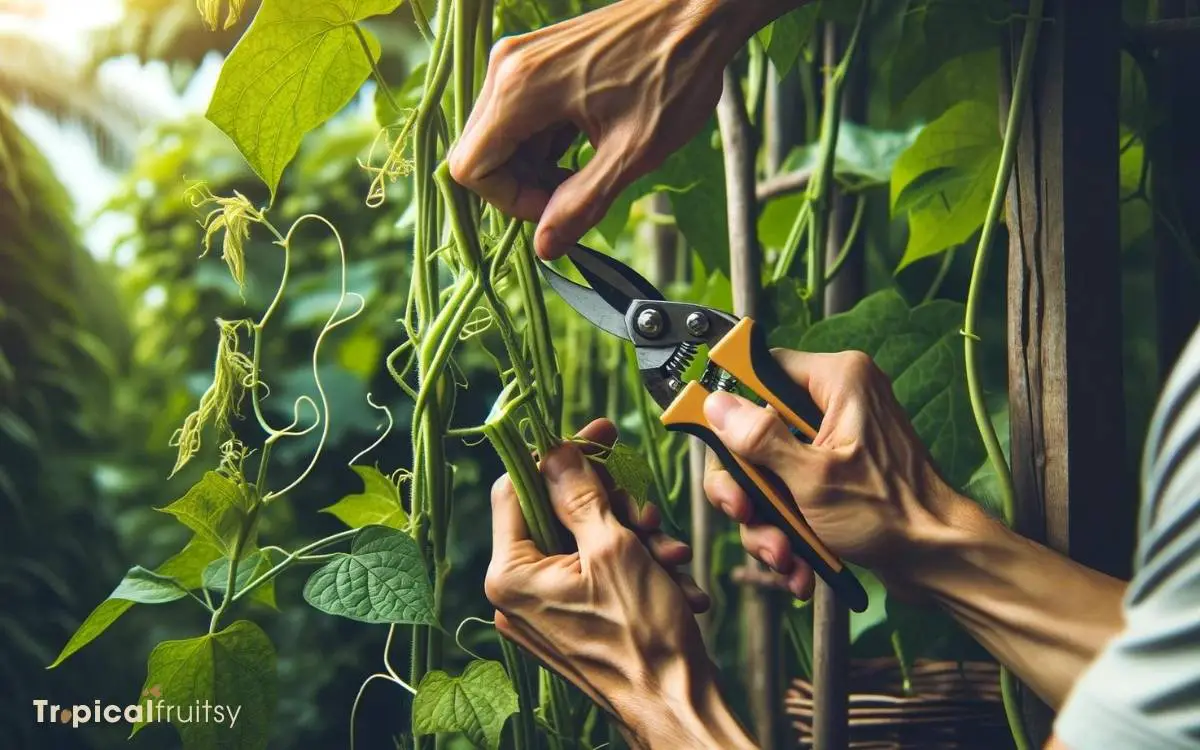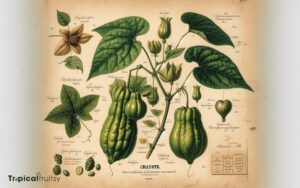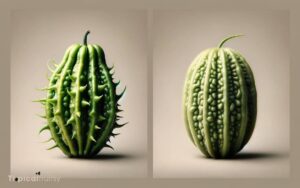How to Prune Chayote Plant? Step-by-Step Guide!
To prune a chayote plant, remove dead or diseased stems, cut back overly long vines to encourage branching, and thin out dense areas to improve air circulation and sunlight exposure.
Pruning chayote, a perennial vine also known as vegetable pear, is essential for maintaining plant health and maximizing fruit production.
Effective pruning not only helps manage the size of the plant, making it easier to trellis and harvest, but also encourages better air circulation, which can reduce the likelihood of fungal diseases.
By selectively removing parts of the plant, you encourage more vigorous growth and potentially increase fruit yield.
The practice of pruning should be done with care, ensuring cuts are clean and as close to the main stem as possible without damaging it.
This selective trimming helps to maintain an optimal balance between vegetative growth and fruit production.

Key Takeaway
Understanding Chayote Growth Habits
The chayote plant, a perennial vine, exhibits vigorous growth and requires careful management to optimize fruit production.
Native to Mesoamerica, Sechium edule, commonly known as chayote, thrives in a trellising system that supports its climbing habit and facilitates sunlight exposure and air circulation.
As a monoecious species, it produces both male and female flowers on the same plant, necessitating proximity for pollination.
The plant’s indeterminate growth means it continues to extend vines and produce fruit throughout the growing season.
For maximal yield, strategic pruning is essential to balance vegetative growth with reproductive development.
Best Season for Pruning
Transitioning from understanding growth habits to pruning techniques, it is crucial to recognize that the optimal time to prune chayote plants is during the early spring before new growth commences.
This period is when the plant is emerging from dormancy, and the risk of frost has typically passed, minimizing the potential for cold injury to new shoots.
Pruning during this window also allows for the removal of any dead or damaged tissue that may have occurred during the winter, which can foster disease if left unattended.
By executing precise cuts, gardeners can shape the plant’s structure, enhance air circulation, and promote vigorous, healthy development.
It’s vital to use clean, sharp tools to make clean cuts that heal quickly, reducing the likelihood of pathogen intrusion.
Essential Pruning Tools
Selecting the appropriate tools is a critical step in the pruning process for chayote plants. Bypass pruners, known for their clean and precise cuts, are particularly efficacious for this task.
Maintaining the sharpness of these pruners with a dedicated sharpening tool is essential to ensure ongoing efficiency and plant health.
Bypass Pruners Efficiency
Utilizing a pair of bypass pruners is crucial for making clean cuts on chayote plants, ensuring minimal damage to the vines.
Bypass pruners are designed with a sharp, curved blade that ‘bypasses’ a non-cutting, curved counter blade, much like a pair of scissors.
This design facilitates a precise and clean cut that is gentler on the plant tissue, promoting better healing and reducing the likelihood of disease entry.
- Ergonomic Design: Bypass pruners typically feature comfortable handles that reduce hand fatigue during prolonged pruning sessions.
- Sharp Blades: The blades are made of high-carbon steel, allowing for a sharp edge that maintains its sharpness over multiple uses.
- Clean Cuts: Precision cutting ensures minimal damage to the plant, which is critical for the health of chayote vines.
For optimal results, it is paramount to maintain the cleanliness and sharpness of the pruners, ensuring each cut is as effective as the first.
Sharpening Tool Importance
Maintain your bypass pruners’ effectiveness by regularly sharpening the blades. This is essential for the health and vigorous growth of your chayote plant.
Sharp tools create clean, precise cuts that facilitate rapid healing and minimize the risk of disease transmission.
Dull blades, conversely, can crush plant tissues, leading to bruising and an increased chance of fungal or bacterial infections. This can be detrimental to the chayote plant’s development.
The act of sharpening involves methodically honing the cutting edge using a whetstone or a specialized sharpening tool. Ensure the blade’s angle remains consistent throughout the process.
This meticulous maintenance practice not only extends the lifespan of your tools but also promotes the overall wellbeing of your chayote plant.
Identifying Pruning Areas
In the process of pruning a chayote plant, the primary focus should be on removing dead or weak stems to encourage vigorous growth and fruit production.
A methodical approach ensures that the plant maintains an optimal structure for health and yield. Identifying which areas of the chayote plant to prune is critical for achieving these objectives.
Here are key areas to focus on:
- Dead or Diseased Wood: Eliminate stems that show signs of disease or damage to prevent the spread of pathogens.
- Overlapping Branches: Prune to prevent crowding, which can impede airflow and sunlight penetration, essential for healthy growth.
- Non-Productive Stems: Remove stems that have not produced fruit to redistribute energy to more fruitful parts of the plant.
A scientifically-informed, systematic pruning strategy ensures the chayote plant’s vitality and productivity.
Step-by-Step Pruning Process
After identifying the areas in need of pruning, the first step in the pruning process is to sterilize your pruning tools to prevent the spread of disease.
Carefully remove any dead or diseased stems, cutting back to healthy tissue to promote healing and growth. Trim away overgrown branches to maintain the plant’s structure and encourage air circulation.
Be meticulous in your cuts, ensuring they are clean and made at a 45-degree angle to facilitate water runoff and prevent rot. Regularly assess the plant’s condition throughout the process, making adjustments as necessary.
| Step | Action |
|---|---|
| 1. Sterilize | Use alcohol or bleach solution on tools |
| 2. Cut Dead | Remove dead/diseased stems to healthy part |
| 3. Shape | Trim overgrown branches for structure |
| 4. Angle | Cut at 45-degree angle for water runoff |
| 5. Assess | Monitor plant condition and adjust pruning |
Aftercare and Maintenance
Proper irrigation following the pruning of a chayote plant is critical to its recovery and continued growth.
Ensuring the plant receives adequate water without becoming waterlogged is essential for the healing of cut surfaces and the stimulation of new growth.
Here are some key points to consider:
- Monitor soil moisture regularly; the soil should remain consistently moist but not saturated.
- Apply mulch around the base of the plant to help retain soil moisture and regulate soil temperature.
- Reduce fertilization immediately after pruning to avoid stressing the plant, then gradually reintroduce it as new growth appears.
Methodically caring for your chayote plant after pruning will help it to thrive, with the goal of achieving a bountiful harvest in the following season.
Common Pruning Mistakes
A chayote plant’s recovery from pruning can be hindered by several common mistakes that gardeners should be vigilant to avoid.
Pruning at the incorrect time of the year can lead to poor plant health and reduced yield. It’s important to recognize the plant’s growth cycle and perform cuts accordingly.
Over-pruning is another mistake that can stress the chayote, hindering its ability to photosynthesize and grow. Conversely, neglecting to remove dead or diseased limbs can spread pathogens throughout the plant.
| Mistake | Consequence |
|---|---|
| Pruning at incorrect time | Can lead to stunted growth and reduced yield |
| Over-pruning | Stresses plant, reduces photosynthesis capacity |
| Inadequate tool sterilization | Introduces diseases, affecting plant health |
| Neglecting diseased limbs | Can lead to the spread of disease |
Each of these errors can be mitigated with informed, careful practices based on horticultural principles.
Conclusion
In summation, meticulous pruning of the chayote plant stands as a pivotal act in the horticultural ballet, ensuring the choreography of growth leads to a bounteous harvest.
By judiciously excising excess growth, one cultivates a robust structure, orchestrating an equilibrium between vegetative vigor and fruitful yield.
As gardeners wield their shears with precision, they not only shape the plant’s destiny but also secure the promise of future abundance encapsulated within the verdant vines of the chayote.





